Water availability has already become a major concern area for humankind. Some UN studies already estimate that some 1 billion people worldwide do not have access to adequate drinking water. Water borne diseases already account for over 50% of preventable human ailments in the poorer regions of the world.Even in the more advanced regions of the world, municipal water supply is no longer considered safe enough to drink. This has spawned a $ 50 billion packaged drinking water industry.
Water crisis is real. Many people are feeling it at the present, and much more and bound to feel it in the future. Right now, there are mainly two things that we all can do. First, we can do our best to conserve water. Second, we can utilize other sources for obtaining potable water. If you are living on land near a big water body, then it is easy for you, then you just have to filter the water. However, in case you live far from them, then you have to look for other sources. In this scenario, the best way is to harvest water from the air.
Ways to harvest water from the air
Every life form present on this blue planet needs water for survival. That’s the reason we see environmentalists over the world encouraging individuals to save every drop. In fact, those precious drops might be what someone is desperately in need for. Many potable water sources are contaminated. Therefore, some designers are looking toward humid air to quench the thirst of millions. Here are some of the best devices that harvest fresh water from thin air:
1. Max Water:
 An Australian inventor has developed a device that is capable of harvesting unlimited water from air. Powered by wind, the device uses the same source for water as well. Dubbed Max Water, the system according to the inventor would even harvest significant amounts of water using air with low humidity. A four-meter square device could extract an average 7,500 liters of water a day.
An Australian inventor has developed a device that is capable of harvesting unlimited water from air. Powered by wind, the device uses the same source for water as well. Dubbed Max Water, the system according to the inventor would even harvest significant amounts of water using air with low humidity. A four-meter square device could extract an average 7,500 liters of water a day.
2. Foldable structure for water harvesting
Two Israeli architects, Joseph Cory and Eyak Malka have designed this foldable triangular structure, named WatAir, that is said to imitate the leaves of a tree to condense atmospheric water vapor and collect it into a tank. The structure folds into a a package of 1 meter maximum dimension and 3.5 kg weight, that the designers claim can be erected anywhere, to harvest atmospheric water.
3. Watermill:
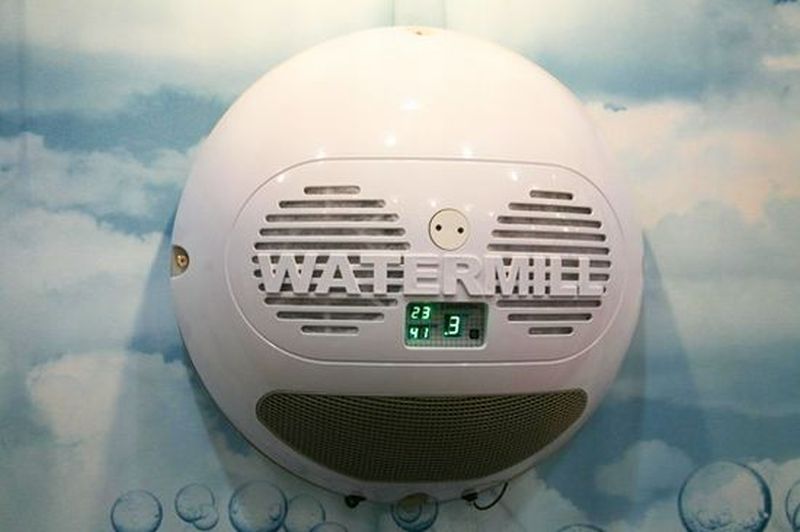 The brainchild of Element Four, the Watermill generates and then filters water. It makes the water fit for consumption. The company promises that their device will be able to generate about 3.2 gallons of fresh drinking water a day. In ideal conditions, that should be enough for a family of six.
The brainchild of Element Four, the Watermill generates and then filters water. It makes the water fit for consumption. The company promises that their device will be able to generate about 3.2 gallons of fresh drinking water a day. In ideal conditions, that should be enough for a family of six.
4. Max Whisson’s Gust Water Trap
Dr Max Whisson of Perth, Australia has come up with a wind turbine design that produces water by condensation, instead of electricity. The wind turbine has vertical blades and is mounted on a swivel with a wind vane tail, so that it can turn to face the direction of the wind. When the turbine turns, the wind gets forced into the hollow tower. The air passes over a refrigerant compressor driven by the wind turbine and condenses into water, that flows into tanks at the base of the tower. A company named Water UN Limited has been formed to commercially apply this technology.
5. Ersa:
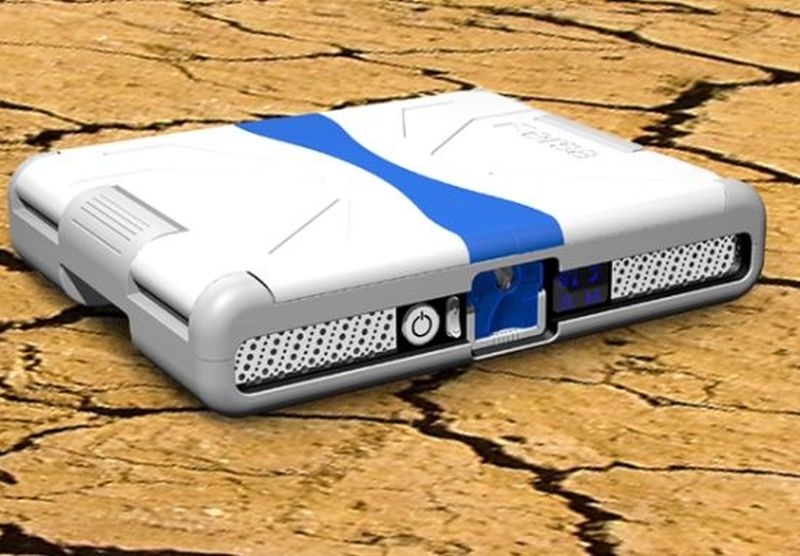 The Ersa by industrial designer Scott Norrie is designed as a standalone, sustainable product. It uses solar energy to create water from the air. The design also uses the onboard solar panels to power handheld devices and trickle-charge a vehicle’s battery.
The Ersa by industrial designer Scott Norrie is designed as a standalone, sustainable product. It uses solar energy to create water from the air. The design also uses the onboard solar panels to power handheld devices and trickle-charge a vehicle’s battery.
6. Windmill to make water from air
The company Dutch Rainmakers of Netherlands has installed a windmill Surinam to produce water instead of electricity. In their design, the air is forced through a heat pump, where the water vapor condenses. This heat pump replaces the refrigerant compressor. The wind mill is said to produce 5000-7000 liters a day, a real boon in a place where the groundwater is brackish.
7. EcoloBlue:
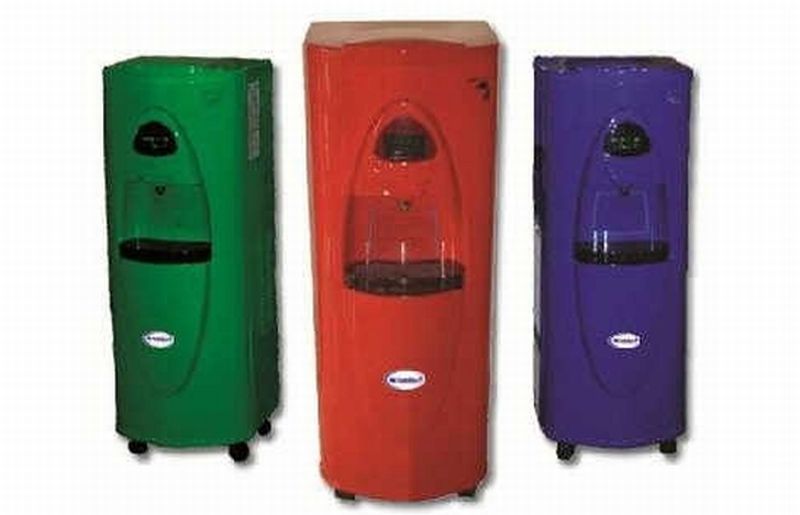 The EcoloBlue Atmospheric Water Generator (AWG) provides you with up to 7 gallons of clean water each day. It does so, however, only when the air around you is humid. The company developing the product states that it works best at 50 percent humidity. Nevertheless, it can also work in humidity levels as low as 30 percent. If, however, the air isn’t humid enough, you can always hook it up to a tap water source so your drinking water is still filtered. The EcoloBlue costs a lot, but the average operating cost stands at just 20 cents for every gallon of clean water.
The EcoloBlue Atmospheric Water Generator (AWG) provides you with up to 7 gallons of clean water each day. It does so, however, only when the air around you is humid. The company developing the product states that it works best at 50 percent humidity. Nevertheless, it can also work in humidity levels as low as 30 percent. If, however, the air isn’t humid enough, you can always hook it up to a tap water source so your drinking water is still filtered. The EcoloBlue costs a lot, but the average operating cost stands at just 20 cents for every gallon of clean water.
8. Refrigerant based condensation
The modern condensation cooling devices, generally use a refrigeration coil to provide the cooling. Many manufacturers worldwide have come up with condensation cooling machines that work on the following principle. Inlet air is filtered to remove dust and suspended particles using fabric filters. This air is passed over coils containing cold refrigerant gases. The condensate water is collected in a stainless steel tank and exposed to ultraviolet light for about 30 minutes to remove bacteria and then filtered through an active carbon filter. The typical cost for a model that produces 20-25 liters a day is about $ 1500 and these machines consume about 500 watts of electricity. These condensation machines are styled like the conventional water coolers installed in offices and public places, and are intended to be used in such locations.
9. RainCloud C-15:
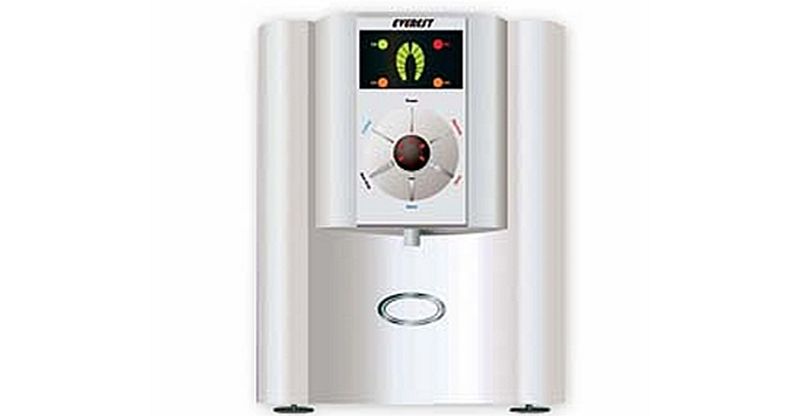
Cleanworld Ltd. has developed the RainCloud system, which is a dehumidifier with a built-in water purification system. The device harvests potable water from humid air. Moreover, it can also heat or cool the water for you to either have a nice chilled glass of water or a cup of tea.
10. Using natural stone structures for condensation
Examples of condensation cooling exist even from early human civilization. In some parts of Europe and the Middle East, there are 10 meter tall beehive-like stone structures dating from the 19th century, called air walls. The stones cool rapidly in the night. When moist air comes in contact with these stones, the condensation yields water that is collected in troughs inside the structure and used for drinking and washing.In France, these structures were also used in some vineyards.
11. Dew Drop:
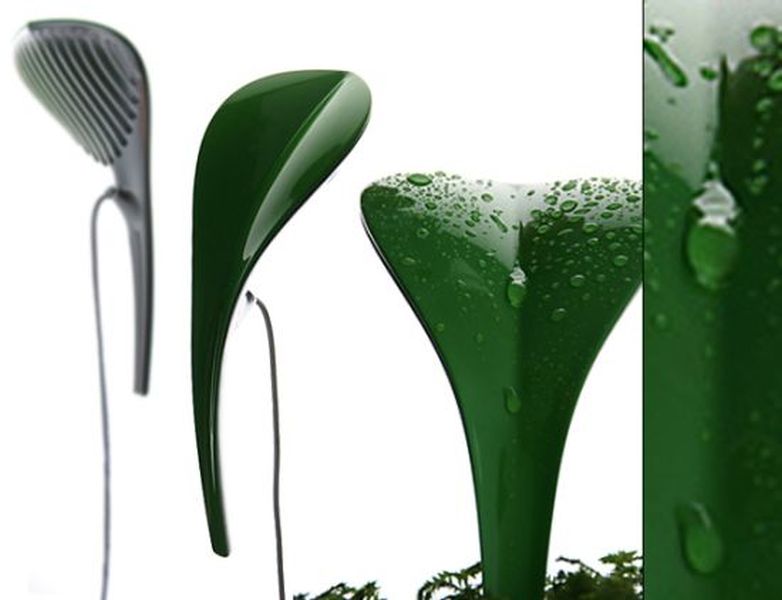 Industrial designer Jacky Wu has designed the Dew Drop device that extracts water from thin air for plants. The Dew Drop works on the principles of condensation. All the user has to do is to plant the artificial leaf in the same pot as the plant and connect it to a wall plug. Water condenses on the leaf and is fed to the plants.
Industrial designer Jacky Wu has designed the Dew Drop device that extracts water from thin air for plants. The Dew Drop works on the principles of condensation. All the user has to do is to plant the artificial leaf in the same pot as the plant and connect it to a wall plug. Water condenses on the leaf and is fed to the plants.
12. Using water nets for condensation
This is the modern adaptation of the ancient stone walls for water harvesting. At a village named Cabajane in sub-Saharan Africa, a team from the South African Agricultural University helped the villagers string up plastic nets across a mountain pass. The clouds and fog through the pass, condensed water on the nets, which ran down through plastic pipes to be collected in a tank. Several hundred liters of potable water became available to the village from this simple device , where they earlier had to walk over 2 km to the nearest stream. This experiment is now being replicated in other villages in sub-Saharan Africa and also in Chile and in some places in Nepal.
13. DropNet:
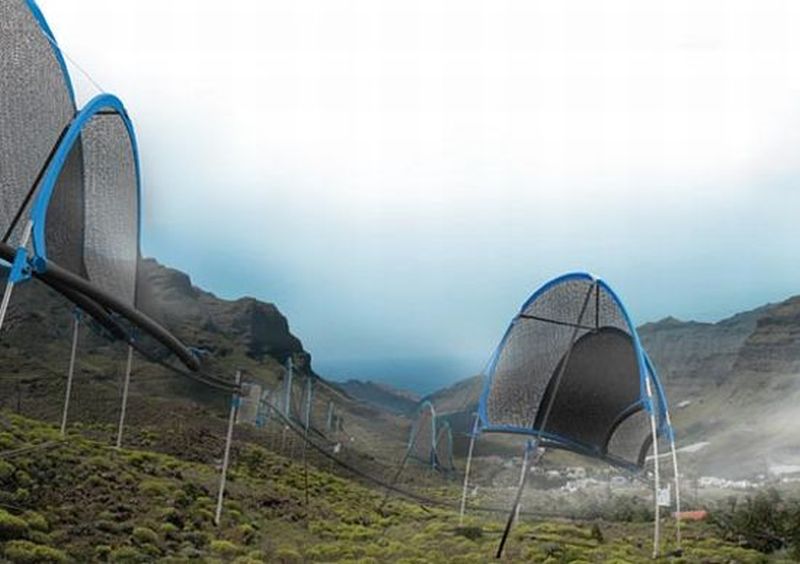 An industrial design student at Germany’s Muthesius Academy of Fine Arts and Design, Imke Hoehler, has created a system that harvests potable water from thin air and mist. Dubbed the DropNet, the water-collecting system can harvest up to 20 liters of clean water each day, and an array of several structures could supply a whole village with potable water.
An industrial design student at Germany’s Muthesius Academy of Fine Arts and Design, Imke Hoehler, has created a system that harvests potable water from thin air and mist. Dubbed the DropNet, the water-collecting system can harvest up to 20 liters of clean water each day, and an array of several structures could supply a whole village with potable water.
14. Refrigeration device
When one hand the world is hit with drought, the researchers are, on the other, up with their gloves in finding a better solution to it. Good news, especially for the desert-dwellers. An Australian inventor has designed a device that is capable of harvesting unlimited water from ‘the air’.
Not just that! The device also serves the nature by the power it is driven with – wind. Thought its critics are considering it to be too good to be true, Dr Max Whisson — a retired medical specialist turned inventor – confidently claims to have designed this highly efficient wind turbine capable of both running a refrigeration system as well as cool air, condensing moisture from it!
Such device if really exists will surely in a near future wipe drought from the world. To add to, we all can just use water from the air without worrying of or disrupting the environment, as there a huge amount of water is available in the atmosphere, which is replaced every few hours.
15. Groasis Waterboxx:
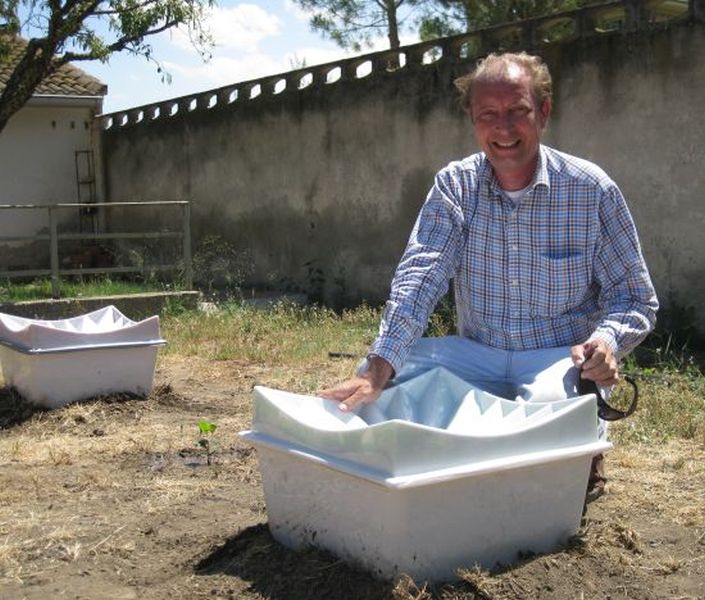 Created by Dutch entrepreneur Pieter Hoff, the Groasis Waterboxx can produce fresh water even in the driest places on earth. Inspired by bird poop, the device is modeled after the way excrement protects seeds that birds have digested, providing humidity and shelter from the elements so that they can grow. The 20-inch by 10-inch box surrounds the young plant and at night an insulation plate allows it to harvest water through condensation.
Created by Dutch entrepreneur Pieter Hoff, the Groasis Waterboxx can produce fresh water even in the driest places on earth. Inspired by bird poop, the device is modeled after the way excrement protects seeds that birds have digested, providing humidity and shelter from the elements so that they can grow. The 20-inch by 10-inch box surrounds the young plant and at night an insulation plate allows it to harvest water through condensation.
16. Liquid desiccant for water harvesting from process air
Sciperio Inc., an Orlando, Florida based technology is working on using liquid Lithium Chloride as the desiccant to remove water from air. Their finding is that this is more energy efficient than using refrigerant based water harvesting technology and have proposed using this for water extraction from air in process plants for industrial use, rather than for drinking.
17. Solar-powered system to generate potable water:
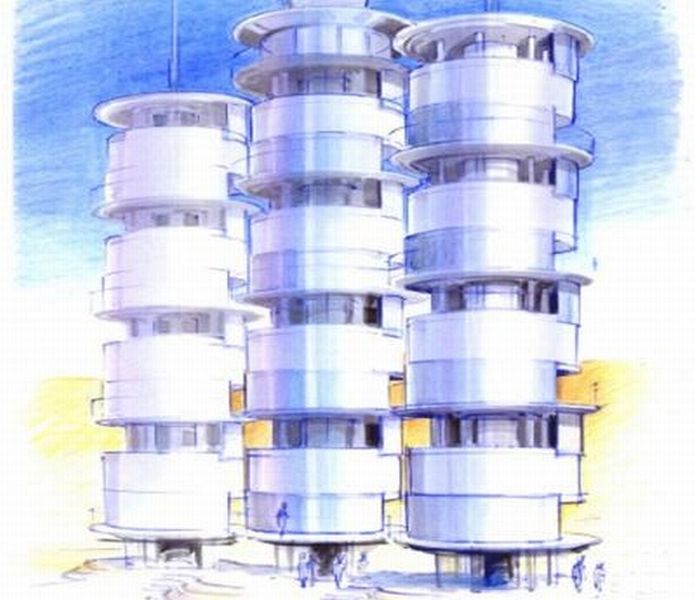 Research scientists at the Fraunhofer Institute for Interfacial Engineering and Biotechnology IGB believe that at an average 64 percent humidity, a cubic meter of air carries about 11.5ml of water, which if extracted can solve the problems of billions of people living in rural areas. The system makes use of hygroscopic brine that absorbs moisture. When this solution is made to run down a tower-shaped unit, it sucks up water from the air, which is then fed into a tank where vacuum prevails. Solar energy then heats up the solution converting water to vapor, which is then condensed and collected.
Research scientists at the Fraunhofer Institute for Interfacial Engineering and Biotechnology IGB believe that at an average 64 percent humidity, a cubic meter of air carries about 11.5ml of water, which if extracted can solve the problems of billions of people living in rural areas. The system makes use of hygroscopic brine that absorbs moisture. When this solution is made to run down a tower-shaped unit, it sucks up water from the air, which is then fed into a tank where vacuum prevails. Solar energy then heats up the solution converting water to vapor, which is then condensed and collected.
18. Use of solar energy for regenerating the desiccant
One variant of the use of wet desiccation by the company A2WH of Atlanta, Georgia which uses a proprietary desiccant for water vapor absorption. This desiccant is heated by solar energy to expel the absorbed water. The unit, installed outdoors, also has photo voltaic panels to generate the electricity needed for operating the units pumps and valves. A2WH says it has models both for the individual home and for irrigation of farms.
19. Water Building Resort:
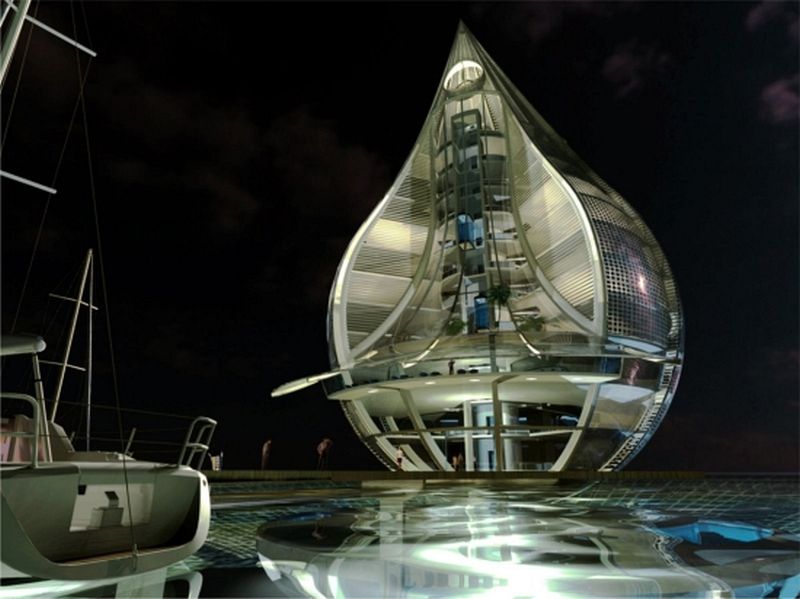 This may not be the portable water-producing device that you are looking for, but this beautiful conceptual resort is designed to answer similar issues. Conceived by Orlando de Urrutia, the Water Building Resort will make use of the best in technology to generate solar electricity, water from air and will also make sea water potable.
This may not be the portable water-producing device that you are looking for, but this beautiful conceptual resort is designed to answer similar issues. Conceived by Orlando de Urrutia, the Water Building Resort will make use of the best in technology to generate solar electricity, water from air and will also make sea water potable.
20. DRIPS for growing crops with water from air
Two high school students from San Francisco, with mentoring by professors from the University of California, Berkeley, have proposed this system for water harvesting from air. DRIPS stands for Deep Root Irrigation Precipitation System and is made of a 1 foot diameter, or larger, plastic or aluminum conical surface mounted on a hollow tube that is buried 1.5 feet into the ground. The plastic or aluminum surface cools in the night and in contact with air, causes water droplets to condense. This water, by capillary action aided by small ribs on the cone, drains into the ground. The depth of 1.5 feet prevents this water from evaporating back into the atmosphere and helps nourish the roots of plants. This method of water harvesting has been demonstrated to grow potatoes.
21. Water harvesting surfaces
 Image Source : news.mit.edu
Image Source : news.mit.edu
With the World Environment Day going on with this year’s slogan, “Don’t Desert Drylands!” researchers at MIT have developed printable surfaces. These are no simple surfaces, but are characterized by being both superhydrophilic and superhydrophobic. This innovative technology will help harvest water from desert air.
Andrew Parker, Oxford University zoologist in England, explained that these new surfaces are more efficient than the currently, methods used to collect water from the air using nets.
The new technology improves on nature with the help of glass nano-particles, mimicking the desert beetles’ way of extracting water from air. Named Stenocara, the beetle lives in Africa’s Namib Desert, which is considered as one of the hottest environment on Earth’s lands.
22. Fraunhofer Institute’s brine tower
The Fraunhofer Institute of Interfacial Engineering and Biotechnology (ICB) in collaboration with the company Logos Innovationen is working on this concept of a tall tower like structure down which hygroscopic brine solution runs down. This brine in contact with air absorbs moisture and runs into a tank at the base of the tower which has a slight vacuum. The tank is heated with solar collectors that causes the brine solution to boil. The vacuum in the tank lowers the boiling point of the brine solution.The water absorbed from the air evaporates and is led out through a tube filled with water. This water column maintains the vacuum in the tank without the need for a vacuum pump. The brine is recovered and pumped up again to flow down the tower.
23. Water Making Machine extracts water from thin air
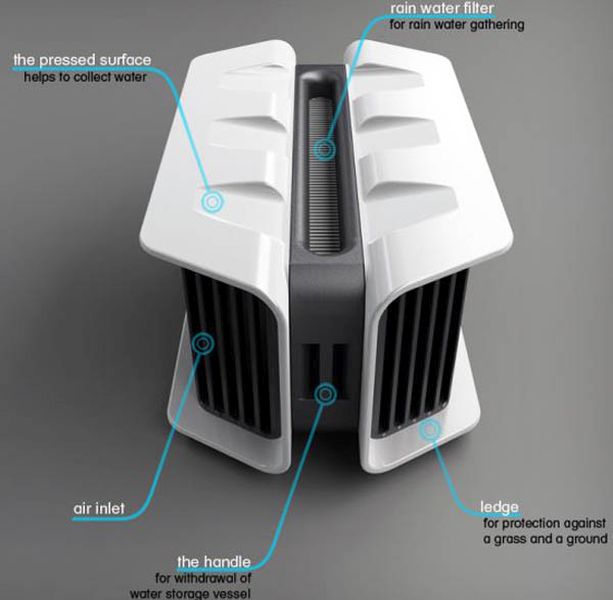 The Water Making Machine designed by Alexander Syachinov compresses vapor to increase the dynamics of condensation. High humidity isn’t a necessary factor as the device works even in low humidity. The water collected is filtered with ozone while another filter removes dust. A third carbon filter works to purify the water even more.
The Water Making Machine designed by Alexander Syachinov compresses vapor to increase the dynamics of condensation. High humidity isn’t a necessary factor as the device works even in low humidity. The water collected is filtered with ozone while another filter removes dust. A third carbon filter works to purify the water even more.
Final Words
Water scarcity is one of the bigger problems plaguing the world today. Developing nations, in particular, are the victims of poor water management leading to fewer sources of potable water. Keeping this in mind, designers are coming up with solutions that claim to be able to harness water from air. Countries like Qatar are even using these on a wide scale.


